LOST VEGAS: The Original Las Vegas That No One Knows About
Posted on: March 1, 2024, 07:07h.
Last updated on: March 11, 2024, 11:17h.
Las Vegas wasn’t even the first Las Vegas in Las Vegas. A thriving community of 2,000-3,000, also called Las Vegas, was established before the railroad that supposedly built Las Vegas even got there.
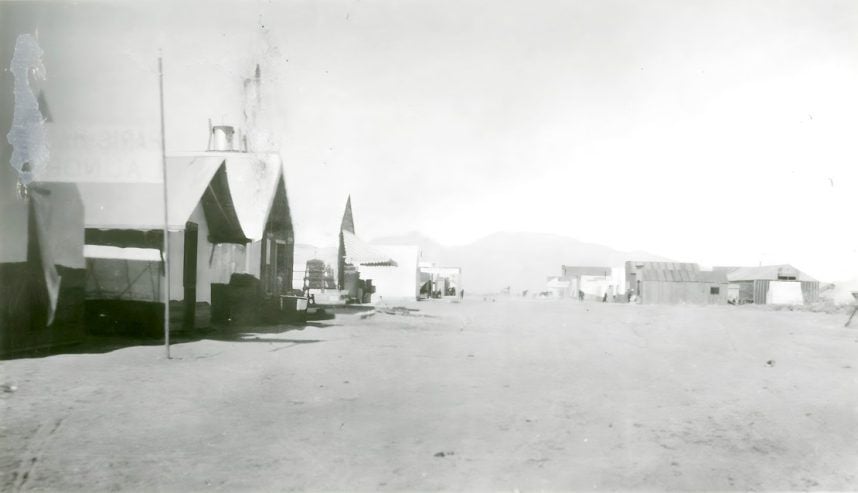
J.T. (John Thomas) McWilliams — born in Ontario, Canada in 1863 — was a freelance land and water surveyor hired in 1902 by the San Pedro, Los Angeles & Salt Lake Railroad. His task was surveying nearly 2K acres the railroad had just purchased from one of Las Vegas’ only residents at the time, Helen J. Stewart.
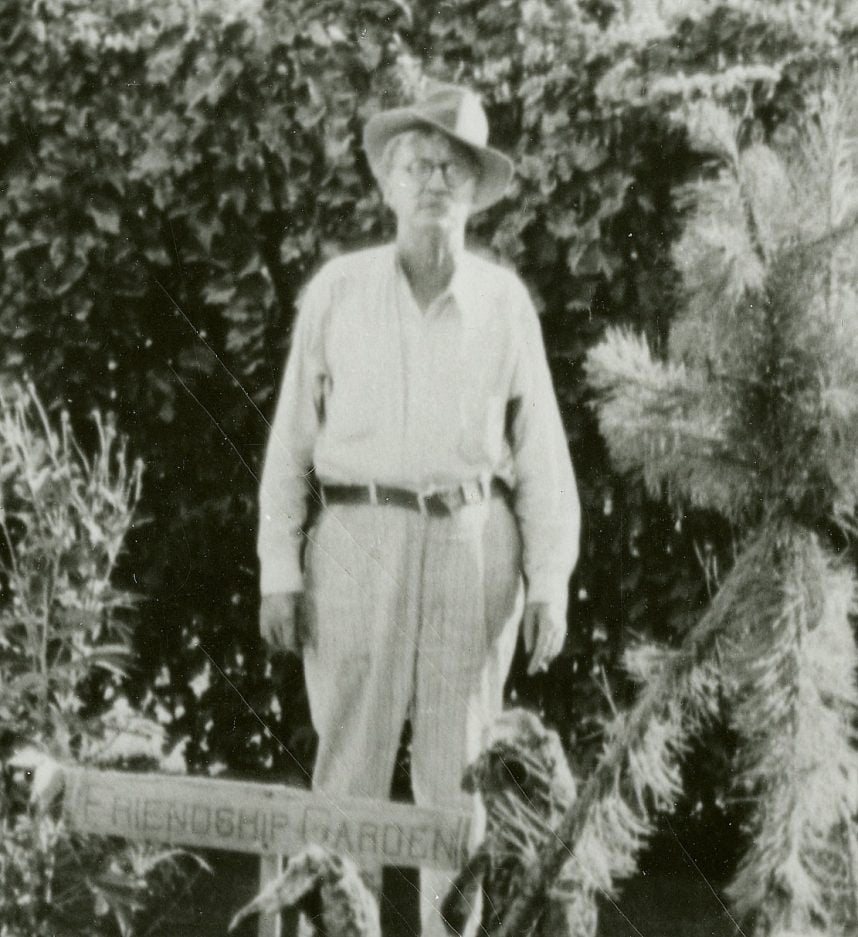
The railroad intended to build a town there for its new railroad station.
Viva Las Vegas 1.0
Armed with that tidbit of insider info, McWilliams schemed to beat the town to town. In 1904, he purchased 80 acres of unclaimed land to the west of the railroad’s property.
Using his surveying skills, he painstakingly laid out an orderly grid, with broad dirt avenues that eventually became today’s Bonanza Road, Washington Avenue, and A and H streets.
After McWilliams built it, they came, miners and railroad workers with their families — white, Black, Latino, and Native American. Most traveled the Mormon Road wagon route either from Los Angeles or Salt Lake City, the two major cities the railroad was being built to connect.
Because most were builders, they had no problem building their own houses, though some lived in tents while saving up for the materials. McWilliams built his own home there, too, at 222 Wilson Ave.
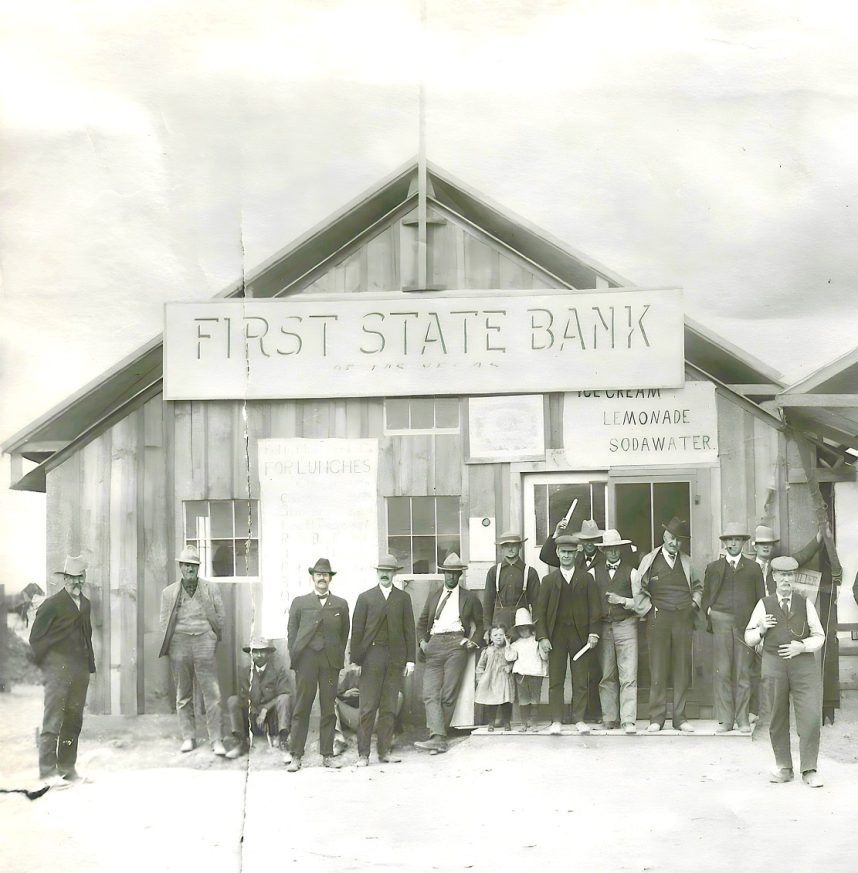
By the beginning of 1905, McWilliams’ Las Vegas had restaurants, blacksmiths, drug and general stores, and Las Vegas’ first bank. It was even building Las Vegas’ first theater. (McWilliams persuaded vaudeville impresario Chauncy Pulsifer to begin construction on the 800-seat Trocadero that May.)
The first Las Vegas had all the modern amenities. Except one.
Leaving Las Vegas
Residents were forced to lug their drinking and bathing water from a hodgepodge of wells dug throughout the community. This was doable, since Las Vegas (Spanish for “The Meadows”) teemed with underground springs before they were all sucked up by decades of development. But it was a hassle.
The railroad’s town provided a water distribution system from the Las Vegas Springs, the rights to which it had acquired along with Stewart’s ranch.
So, when Montana Sen. William A. Clark, owner of the railroad, began advertising the May 15-16, 1905 land auction that would establish Clark’s Las Vegas Townsite on the other side of the freshly built railroad tracks, the thing that stuck out to residents of the O.G. Las Vegas about Clark’s lots was that they all included running water.
McWilliams got a jump on it, but he didn’t have the water rights, and that’s what destroyed him,” Emmett Gates, a Las Vegas documentary filmmaker, told Casino.org.
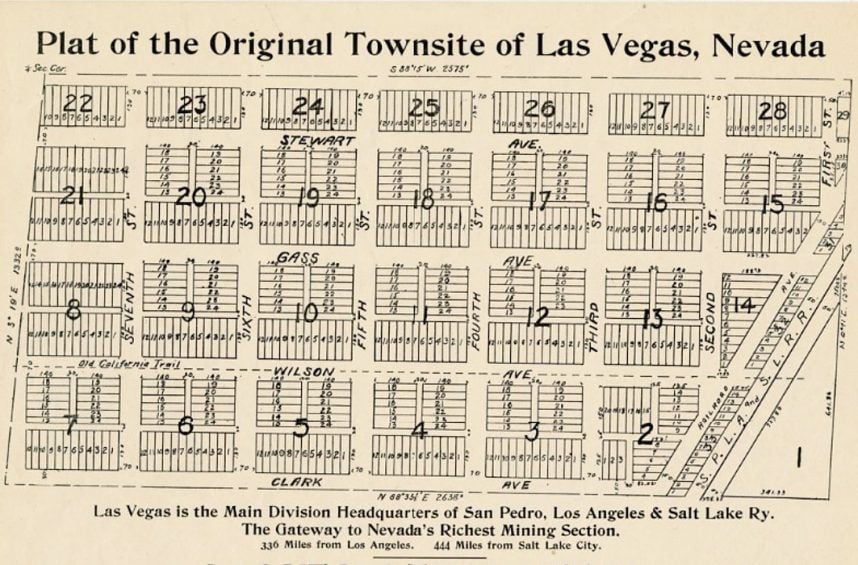
In just a few weeks, McWilliams’ Las Vegas emptied out while Clark’s became today’s downtown.
“People with businesses placed the buildings on skids and moved them across the tracks to the Clark side,” Gates said.
Once Clark’s Las Vegas became the official one, the original fell into almost immediate decline. A fire in September 1905 consumed most of what was left of the town, including the half-built Trocadero.
McWilliams, who refused to relocate, insisted that the blighted area be called “The Original Las Vegas Townsite,” but no one listened. They were already denigrating it as “Ragtown.” Later, its name became Old Town and then the Westside.
Lost Founder
In the fall of 1941, McWilliams died of a heart attack at 222 Wilson Ave., before his neighborhood even had paved streets or a sewer system. After his widow also died there in the ’60s, their house was demolished to make way for Interstate 15.
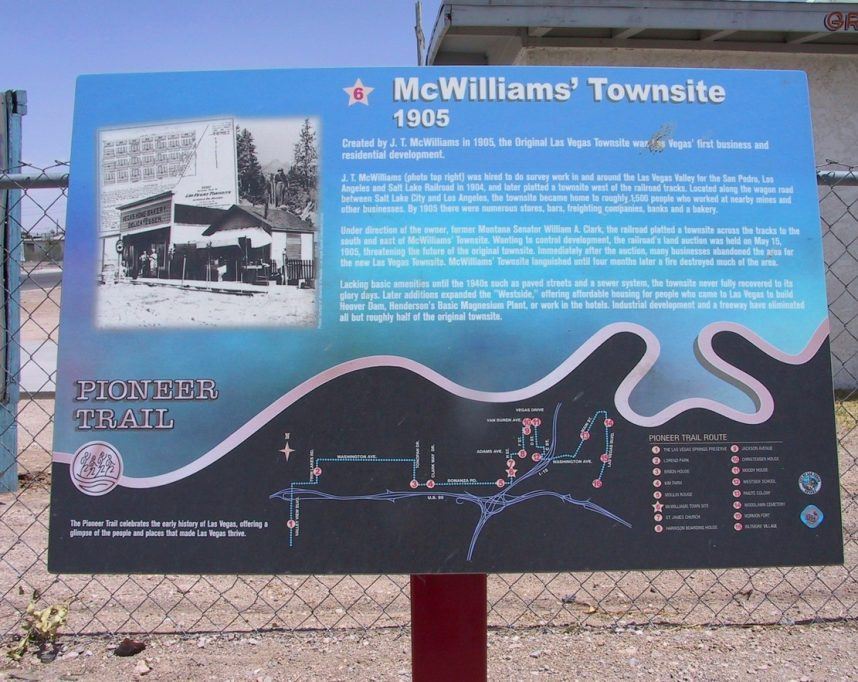
Today, the area is known as the Historic Westside, but not because of any particular honor paid the original Las Vegas. Its historicity derives from the Black community that built the neighborhood up after getting herded and trapped there, beginning in 1931, due to the openly racist policies of Las Vegas Mayor Ernie Cragin.
And so William Clark got all the glory. He receives all the credit for founding Las Vegas. He even got the county in which the city resides named after him.
All McWilliams got was forgotten. His legacy is JT McWilliams Elementary School and the nearby McWilliams Avenue, on which a sign fronting a vacant lot commemorates his townsite. Mount Charleston, where he owned a second home, also has a McWilliams Campsite.
There’s absolutely nothing that remains of the McWilliams Townsite,” said Gates, “and historians are the only ones who use that name, because they’re the only ones who remember who McWilliams was.”
“Lost Vegas” is an occasional Casino.org series featuring remembrances of Las Vegas’ forgotten history. Click here to read other entries in the series. Think you know a good Vegas story lost to history? Email corey@casino.org.
Related News Articles
High-Speed LA to Vegas Railway Gets Bipartisan Backing
Fire Guts Proposed Las Vegas Casino Site Where Historic Nightclub Stood
HIDING IN PLAIN SIGHT: Las Vegas Details You Never Noticed
Most Popular
Las Vegas Overstated F1 Race’s Vegas Impact — Report
Mega Millions Reportedly Mulling Substantial Ticket Price Increase
NoMad Hotel to Check Out of Park MGM on Las Vegas Strip
Most Commented
-
End of the Line for Las Vegas Monorail
— April 5, 2024 — 90 Comments -
Mega Millions Reportedly Mulling Substantial Ticket Price Increase
— April 16, 2024 — 8 Comments -
Long Island Casino Opponents Love New York Licensing Delays
— March 27, 2024 — 5 Comments

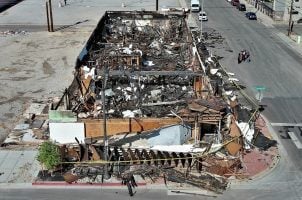
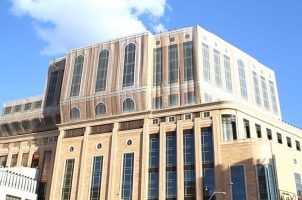









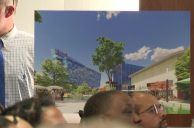



Last Comments ( 6 )
You only blame Cragin for racism but there were several commissioners who had to vote for any proposals to pass.
We lived at 521 West McWilliams from 1952 to 1956. It was a fourplex payments. West McWilliams was a dirt road and paved around 1956 before we moved to Hyde Park. I have a good memories living on Westside. My brother and I went to Westside Elementary, then to Bonanza. In ‘56, we went to Red Rock Elementary. I still remember our neighbors across the street, Senora Vasquez, Mr. & Mrs Simms and Mrs Hampton. Si The Simms and Haptons would baby sit us for many years.
My Grandparents lived on D.St where the park is at, and my Mom went to Westside school from 1928 -1932. My Grandfather was the contractor for the plumbing for Moulin Rouge..
Good true history. I expect this and many of the collective real history of Clark County will be correctly dedicated in the new coming (do not know the official name ) Black History facility. Barbara Phillips
Hi, Tim Shaw! The first part of your comment is covered in my second paragraph. McWilliams' second house in Lee Canyon was something I thought fell too far outside the scope of this story to get into. But thanks for your comment!
JT McWilliams was the surveyor of the Las Vegas Townsite, lots sold by Clark He built a beautiful cabin in Lee Canyon that is directly west of the fire station Don Stewart owned the home that fronts Lee Canyon and knew him well